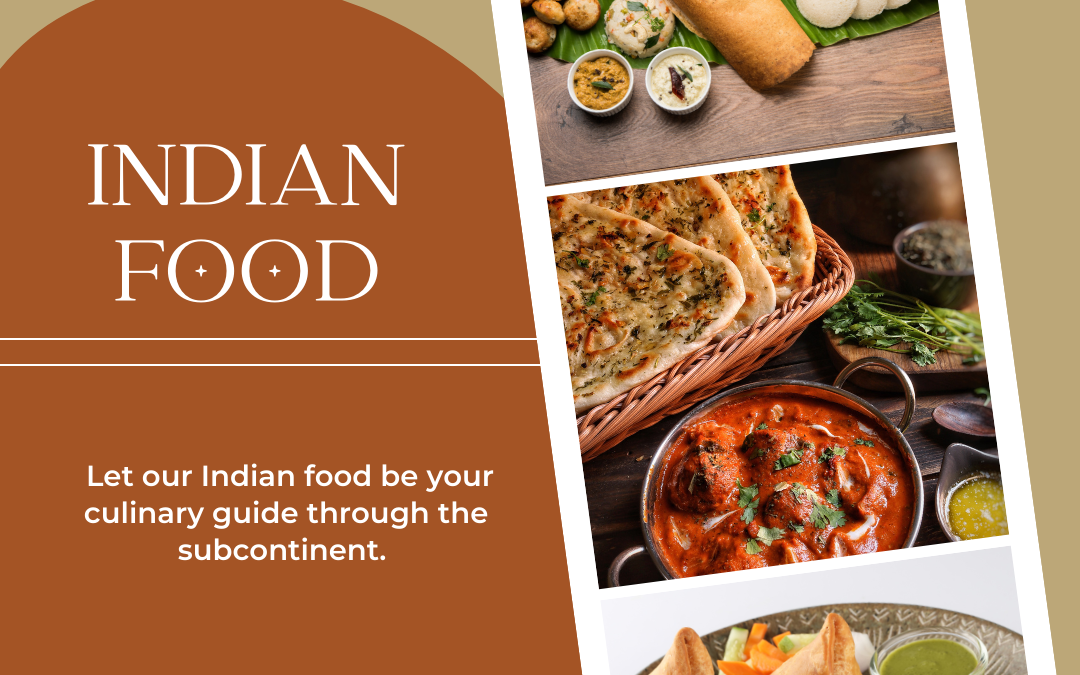
The Essential Guide to Indian Food: Top 10 Must-Try Indian Breads
November 9, 2024
A Taste of Indian Food Culture: How to Make Authentic Indian Breads at Home
November 9, 2024India’s culinary landscape is a tapestry of diverse flavors, and its bread-making traditions are no exception. Each region offers distinct breads that reflect its cultural and geographical influences. The North presents naan, a soft, leavened delight often cooked in a tandoor, while Gujarat offers khakhra, a thin, crisp snack. In Tamil Nadu, the layered parotta captivates with its intricate folds, whereas Maharashtra’s bhakri provides a hearty accompaniment to spicy curries. These breads are more than mere accompaniments; they are cultural symbols that highlight India’s rich culinary heritage. Discover what makes each of these breads a unique culinary treasure.
Popular Regional Breads
Indian food landscape is as diverse as its cultural tapestry, and this diversity is vividly reflected in the array of regional breads that form an integral part of its gastronomy. From the heart of Punjab to the coasts of Kerala, each region offers a distinct bread that embodies its unique heritage and flavors.
Naan, a staple in North Indian cuisine, is often leavened and cooked in a tandoor, resulting in a soft, pillowy texture that perfectly accompanies rich curries.
In contrast, the Western region of Maharashtra brings us Bhakri, a hearty, unleavened flatbread made from millet or rice flour, cherished for its earthy taste.
Venture south to Tamil Nadu, and you’ll discover Parotta, a flaky, layered bread that is both an art form and a comfort food, often paired with spicy curries.
Meanwhile, the eastern state of West Bengal introduces Luchi, a deep-fried puffed bread that is both delicate and indulgent, traditionally enjoyed with a variety of vegetarian dishes.
These breads are not merely a means to satiate hunger; they are cultural ambassadors that invite us to experience the warmth and diversity of Indian hospitality.
Techniques and Traditions
Delving into the techniques and traditions behind Indian breads reveals a rich tapestry of culinary artistry and cultural significance. Each type of bread, from the humble chapati to the elaborate stuffed parathas, is crafted using age-old methods that resonate with regional identities and familial customs. The preparation often begins with the careful selection of ingredients, such as the choice of flour—be it wheat, millet, or rice—each imparting unique textures and flavors.
In northern India, the tandoor, a clay oven, plays a pivotal role in bread-making, baking naan and kulcha to airy perfection. The process involves skillfully slapping dough onto the walls of the intensely hot oven, creating a unique char and smoky flavor.
Meanwhile, in the southern regions, dosa and appam batter is fermented meticulously, a technique passed down through generations, ensuring the perfect balance of tanginess and softness.
The tradition of bread-making is often a communal affair, where families and neighbors gather, fostering a sense of belonging. The rhythmic rolling of dough and the gentle roasting on open flames or griddles become rituals, binding communities and preserving cultural legacies. Indian breads are more than sustenance; they are a celebration of life’s shared moments.
Indian food, embodying regional diversity, reflect a tapestry of cultural heritage and culinary artistry. From the North’s soft naan to Maharashtra’s crispy bhakri, from Tamil Nadu’s flaky parotta to West Bengal’s deep-fried luchi, each variety narrates a story of tradition and technique. These breads not only satisfy the palate but also connect communities, honor ancestral practices, and celebrate India’s rich gastronomic legacy. The art of bread-making remains a cherished tradition, uniting flavors and generations across the nation.
Next article Prev article
